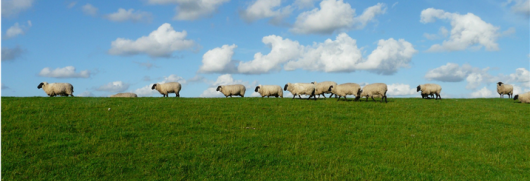GrassToGas

Strategies to mitigate GHG emissions from pasture based sheep systems
More than 30% of the Earth’s total land mass is used for grazing livestock production, mainly by ruminant animals. The evolutionary adaptation of the ruminant’s ability to convert pasture to animal products such as meat, milk, and fibre may have been successfully harnessed, but ruminant production has an unwanted byproduct of an important greenhouse gas (GHG), methane. The aim of the project is to combine international scientific and industry expertise to generate new knowledge and applied solutions for the mitigation of GHG emissions in sheep. GrassToGas will identify individual animal, feed and environmental attributes associated with feed and water intake efficiency for pasture-based sheep production systems. The potential impact would be relevant for the mitigation of GHG emissions within 5 - 10 years and beyond, by the application of the results from this project into future sheep breeding programmes designed to produce cumulative reductions of GHG emissions of around 1-3% p.a.
Coordinator
Scotland's Rural College, SRUC, United Kingdom
Joanne Conington
Project partners
INRA - UMR 1388 GenPhySE, INRA GenPhySE, France
National Agriculture Research Institue, INIA, Uruguay
Norwegian University of Life Sciences, NMBU, Norway
TEAGASC - Agriculture and Food Development Authority, TEAGASC, Ireland
AgResearch, AGRES, New Zealand
International Center for Livestock Research and Training, ICLRT, Turkey
Sheep Ireland CLG, Sheep Ireland, Ireland
Total requested funding
1,497,000 €
Start-end date
01.10.2019-30.09.2023
Project duration
36 months
Project website and social media
Twitter: @GrassToGas
- Unfortunately, your cookie settings do not allow videos to be displayed. - check your settings
NEWS from GrassToGas
2020.05.18

Grass to Gas consortium met ‘in person’ for the first time, in Edinburgh in December, following the commencement of the project 1st October 2019 and subsequent kick-off meeting later in that month. The overall aim of the project is to generate new knowledge and applied solutions for the mitigation of greenhouse gas emissions (GHG) in sheep, via the use of new technology and animal breeding to predict feed efficiency and methane emissions at the animal and microbiome levels. That meeting may be the only face-to-face one for some time to come, as our initial planning in late 2019 has more recently been taken over by discussions and new planning centred around the impact that COVI19 will have /has had on the implementation of some experimental work of the participating countries. Although data collection in some partner countries may be able to commence later in 2020, some of the more seasonal experimental trials cannot go ahead this year. However, all methodologies and protocols are being put in place to be picked up next year, and novel ways to install the new methane-measuring equipment in Norway will now take place via video link directly from New Zealand.
